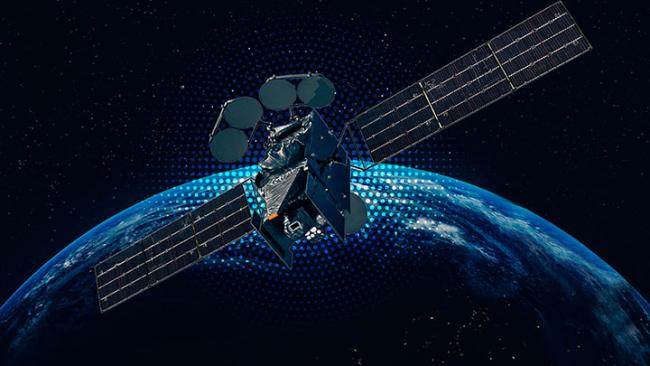Media are invited to participate in a teleconference discussing the upcoming launch of TEMPO on Wednesday, April 5. TEMPO will soon provide the first-ever hourly scans of air pollution over greater North America.

What: Media teleconference to discuss the upcoming launch of the NASA-Smithsonian instrument TEMPO.
When: Wednesday, April 5, 2023, 1 p.m. ET
Where: The public may tune in to a livestream audio of the teleconference at nasa.gov/nasalive.
RSVP: Media may participate in the teleconference by emailing Nadia Whitehead no later than one hour prior to the start of the event at nadia.whitehead@cfa.harvard.edu.
Media are invited to a teleconference at 1 p.m. EDT Wednesday, April 5, to discuss the upcoming launch of TEMPO, the first space-based instrument to observe major air pollutants across North America every hour during the daytime.
TEMPO, short for Tropospheric Emissions Monitoring of Pollution instrument, will improve life on Earth by revolutionizing the way scientists observe air quality. A partnership between NASA and the Smithsonian Astrophysical Observatory – a part of the Center for Astrophysics | Harvard & Smithsonian – TEMPO will launch on a commercial mission in early April from the Cape Canaveral Space Force Station in Florida.
The teleconference briefing participants are:
- Karen St. Germain, Earth Science Division director, NASA Headquarters
- Kevin Daugherty, TEMPO project manager, NASA’s Langley Research Center
- Xiong Liu, TEMPO deputy principal investigator, Center for Astrophysics | Harvard & Smithsonian
- Dennis Nicks, director of payload engineering, Ball Aerospace
- Aaron Abell, TEMPO project manager, Maxar
- Jean-Luc Froeliger, senior vice president of Space Systems, Intelsat
Media may participate in the teleconference by emailing Nadia Whitehead no later than one hour prior to the start of the event at nadia.whitehead@cfa.harvard.edu.
TEMPO will be the first space-based instrument to monitor major air pollutants hourly in high spatial resolution — down to four square miles — in a region stretching from the Atlantic to the Pacific, and from the Canadian oil sands to below Mexico City, encompassing the entire continental United States.
The instrument is a payload on the satellite Intelsat 40E. It was built by Ball Aerospace and integrated onto Intelsat 40E by Maxar.
The public may tune in to a livestream audio of the teleconference at nasa.gov/nasalive.
# # #
About the Center for Astrophysics | Harvard & Smithsonian
The Center for Astrophysics | Harvard & Smithsonian is a collaboration between Harvard and the Smithsonian designed to ask—and ultimately answer—humanity's greatest unresolved questions about the nature of the universe. The Center for Astrophysics is headquartered in Cambridge, MA, with research facilities across the U.S. and around the world.
Media Contact:
Nadia Whitehead
Public Affairs Officer
Center for Astrophysics | Harvard & Smithsonian
nadia.whitehead@cfa.harvard.edu
617-721-7371
Related News
Astronomers Discover New Building Blocks of Complex Organic Matter
Media Advisory: New Space Instrument To Deliver Near Real-Time Air Pollution Data
Air Pollution Sensor Integrated and Tested with Commercial Satellite Host
First Rocky Exoplanet Confirmed with NASA's JWST
A Leading Light in Atmospheric Science
New from JWST: An Exoplanet Atmosphere as Never Seen Before
Astronomers Warn of Risk of Misinterpreting JWST Planetary Signals
New Grant Supports Teen Air Quality Studies
Astronomers Detect Carbon Dioxide on Planet for the First Time with JWST
TEMPO Air Pollution Instrument Completes Satellite Integration
Projects
AstroAI
AtomDB
GMACS
For Scientists
HITRAN and HITEMP Database
Sensing the Dynamic Universe
SDU Website